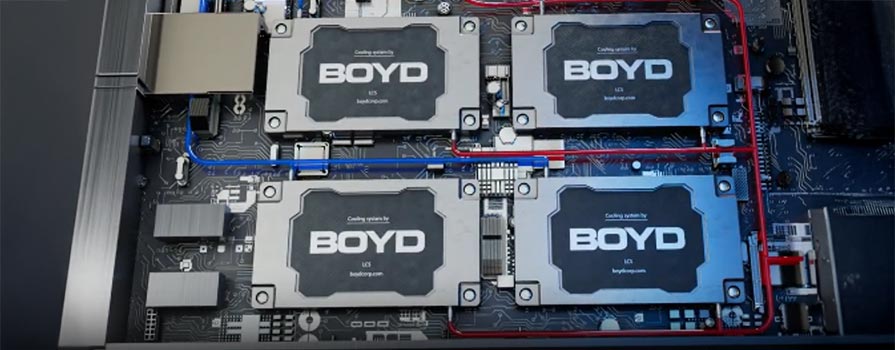What is Thermal Interface Material?

Many engineers focus more on heat sink design but often forget to spend time considering how heat gets from the heat source to the heat sink. Even the smoothest surface has some level of surface roughness. The roughness of two surfaces in contact with each other creates air pockets. Since air is a good thermal insulator, air pockets from mating surface roughness impedes heat transfer from one surface to another.
In the image below, heat coming from the black surface can only conduct through to the grey heat sink at the points highlighted in red. Orange arrows help visualize that heat is coming from the entire black surface but is restricted through these contact points. Air pockets are represented in light blue. Heat can transfer through the blue air pockets, albeit highly inefficient and very little compared to the level of conduction through the red contact points.
This is applicable for any electrical device, commonly enclosed in a case, that transfers heat to a metal heat sink without a thermal interface material.
What does Thermal Interface Material do?

This is where using thermal interface material comes in. TIM replaces most of these air pockets with a material optimized for better thermal conductivity. By using thermal interface material, we increase how much heat is transferred away from the heat source and into the heat sink.
In the diagram below, dark blue represents thermal interface material. Most of the light blue air pockets have been eliminated and replaced with a more conductive material. Heat is now efficiently conducting across the entire surface. This improves heat transfer away from the heat source significantly. It’s nearly impossible to remove 100% of air in most cases so there are still small air pockets in little nooks and crannies. But the thermal performance in this instance is greatly improved to the scenario with no TIM present.
Thermal interface material comes in many different formats and options: electrically isolating or electrically conductive, silicone base or silicone free, compliant or hard, solid or liquid or both, etc. TIM selection is a very application specific decision.
Learn More about Thermal Interface Materials
Learn more about the different types of Thermal Interface Materials, typical options available for each, and common uses for them. Or estimate the impact of adding different thermal interface materials in Boyd Genie in your air cooled heat sink application.






